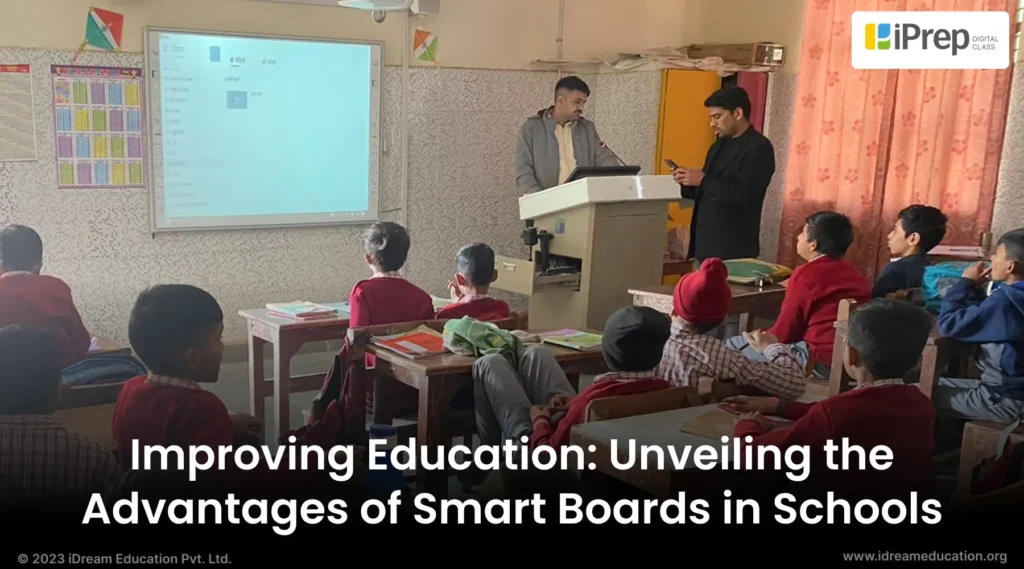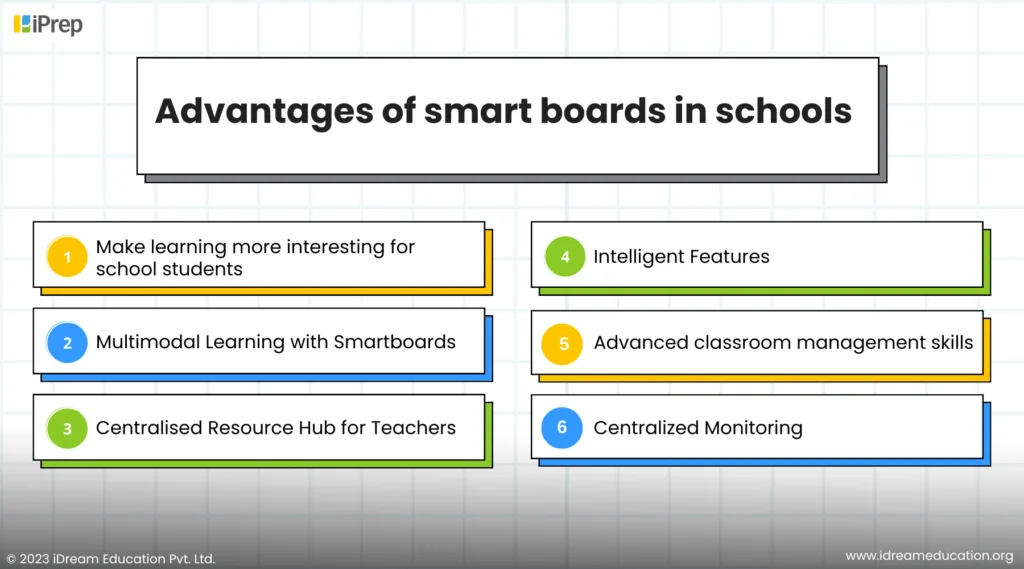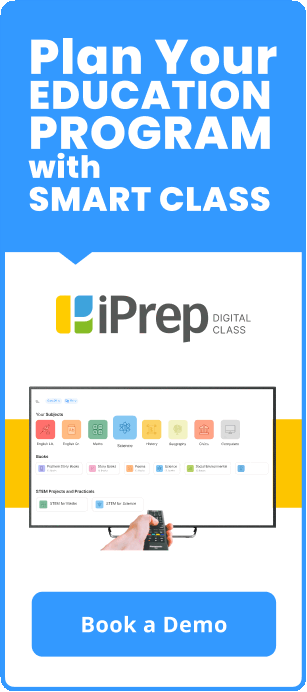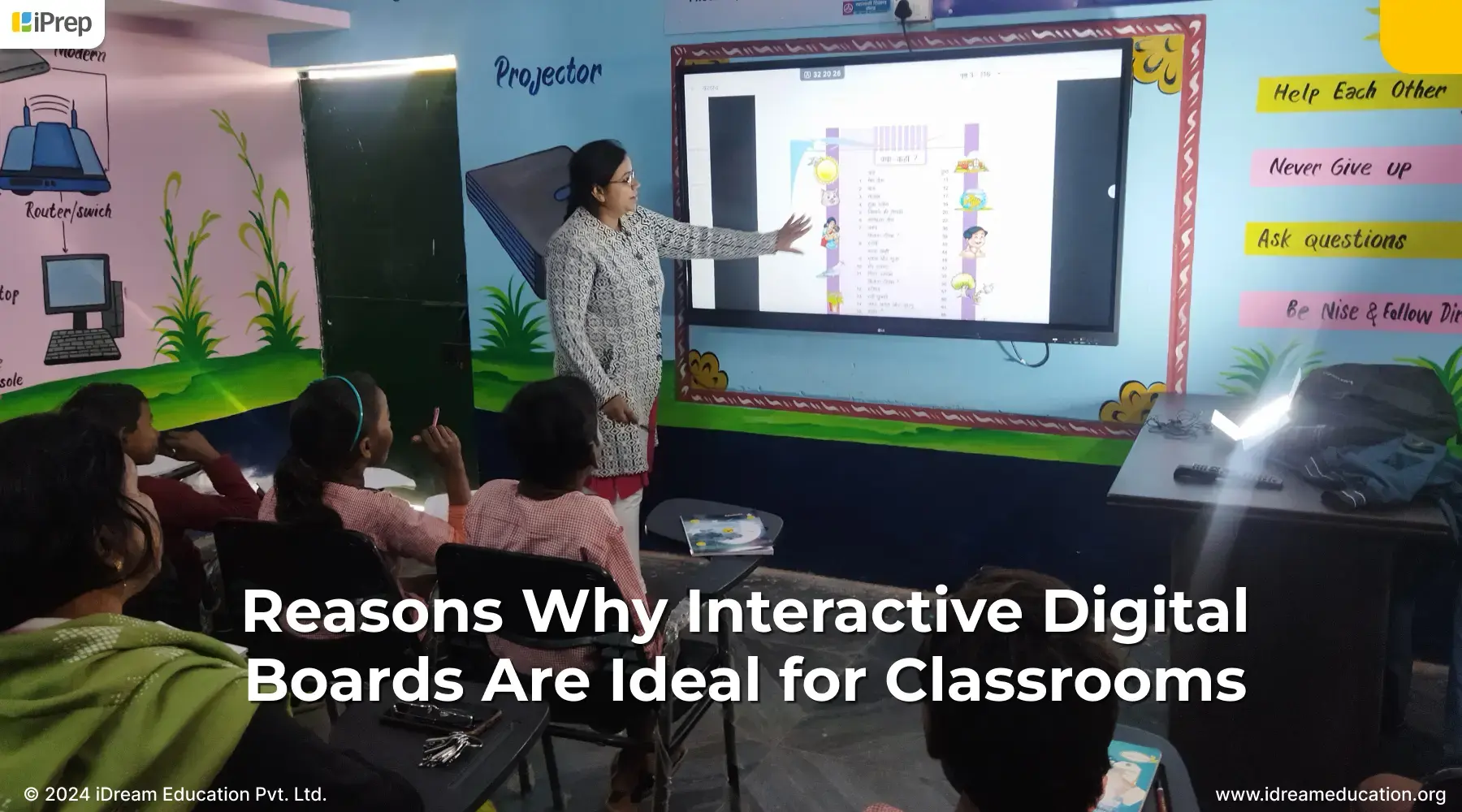What are the Advantages of Smart Boards in Schools?

A major factor in the change in the education landscape is the way that technology has reshaped conventional teaching strategies. The use of Smart Boards in classrooms is one of the most noteworthy innovations of recent years. These interactive whiteboards are more than just digital chalkboard replacements; they are useful tools that provide many kinds of benefits to teachers and students alike. The advantages of smart boards in schools are undeniably promising and are compelling enough for a school to be unable to oversee them.
A Smart Board, also known as an interactive whiteboard, is an advanced technological tool utilized in educational and business settings. It seamlessly combines the functionality of a traditional whiteboard with the interactivity of a computer. Typically, a Smart Board consists of a large touch-sensitive display surface connected to a computer and a projector.
In the educational landscape, Smart Boards serve as smart class solutions, where teachers employ them as a digital replacement for the blackboard. But how will a Smart Board benefit a classroom in terms of teaching and learning? What benefits do they bring to teachers, students, and school administrators?
Let’s delve into the advantages of smart boards in schools further in this blog post.

Advantage 1 – Make learning more interesting for school students
The advantages of smart boards in schools are multifaceted, with one notable benefit being their capacity to make learning more captivating and engaging for students. Smart boards transcend traditional teaching methods by incorporating interactive and dynamic features that stimulate students’ interest and participation in the learning process. These technologically advanced tools enable educators to seamlessly integrate multimedia elements, such as videos, animations, and interactive applications, into their lessons, transforming the classroom into an interactive hub of knowledge. As students interact with the content displayed on the smart board, they are not only exposed to diverse learning modalities but are also encouraged to actively participate in discussions and problem-solving activities. This interactive approach not only caters to diverse learning styles but also fosters a more immersive and enjoyable learning experience.
In essence, the advantages of smart boards in schools extend beyond the conventional, offering a technological bridge that enhances the educational journey for students, making it both informative and enjoyable
Advantage 2 – Multimodal Learning with Smart Boards in Schools
Among the many advantages of smart boards in schools is the ability to support multimodal learning possibilities. Smart boards provide a more immersive learning environment for students by combining hands-on, visual, and sound inputs, in contrast to traditional teaching approaches. Because interactive whiteboards appeal to both the visual and auditory senses, teachers can use a variety of media, including pictures, movies, and interactive simulations. To meet both the visual and haptic learning preferences of their students, they can actively participate by touching and exploring content on the board.
This multimodal method promotes a more inclusive and dynamic learning environment in the classroom by improving comprehension and accommodating different learning styles.
The smart board transforms into a versatile tool, transcending traditional limits, as students actively participate in the content through features such as multi-touch, drawing, and the ability to zoom in, zoom out, and move images around. This integration not only fosters a more engaging educational experience but also facilitates a deeper comprehension of subjects.
Advantage 3 – Centralised Resource Hub for Teachers
Smartboards provide educators with a centralized hub for a vast array of resources, including textbooks, videos, simulations, tests, projects, and more. With a single license, teachers gain access to a comprehensive library spanning all subjects and classes. This empowerment allows them to seamlessly navigate between different classes and subjects, facilitating the clarification of concepts from content designed for junior classes. Such versatility fosters a robust foundation for learning, providing educators with a streamlined approach to accessing and utilizing educational materials efficiently.
Advantage 4 – Intelligent Features
One of the significant advantages of smart boards in schools is the enhancement of the teaching-learning experience through intelligent features. Unlike traditional blackboards that often necessitate frequent erasing, smart boards offer a touch-based interface, eliminating the constant need for erasing. Teachers can effortlessly write on the board using an interactive pen, thereby improving precision and minimizing the time spent on erasing.
A noteworthy advantage of smart boards is the integration of a virtual ruler, a feature not found in conventional teaching tools. When, for instance, drawing a circle on a blackboard, achieving a perfectly circular shape can be challenging. In contrast, the smart board provides a user-friendly interface, offering a selection of shapes, including circles, ensuring the accurate and easy creation of geometric figures. This incorporation of smart features not only simplifies the teaching process but also enhances the visual quality of instructional content.
Furthermore, if internet connectivity is available, teachers can seamlessly go online to delve deeper into concepts, broadening the scope of learning beyond the physical classroom. This connectivity adds an extra layer of resourcefulness to the smart board, empowering educators to explore and expand on educational content using online resources.
Advantage 5 – Advanced classroom management skills
Another advantage of smart boards in schools is that they play a crucial role in improving teachers’ classroom management skills. Teachers’ reports are easily tracked through this system. For example, what the teacher taught last week is recorded on the smart board, allowing educators to maintain continuous awareness of the covered material. This includes details on which chapter was taught, how much has been covered, and where they left off. This information assists teachers in seamlessly resuming their lessons from the point where they concluded. With these capabilities, teachers can strategically plan and effectively navigate through the syllabus to ensure comprehensive coverage.
Smart boards also play a pivotal role in assessing student engagement through the integration of animated lessons and interactive features. The incorporation of animated lessons captures and sustains students’ attention, contributing to a dynamic learning environment. Additionally, the inclusion of Multiple-Choice Question (MCQ) based practices on smart boards facilitates engaging question-and-answer sessions. Teachers can pose questions to students and subsequently analyze the aggregated responses. This interactive approach not only fosters a more enjoyable learning experience but also provides valuable insights for teachers to enhance their classroom management skills.
Advantage 6 – Centralized Monitoring
Centralized monitoring is undeniably one of the most important advantages of smart boards in schools. The reports generated through the utilization of smart boards provide valuable insights for school administration. These reports encompass metrics such as the extent of utilization by teachers, the duration of instructional videos viewed, and the overall impact on teaching effectiveness. This consolidated data enables administrators to assess the integration of smart boards into the teaching process and evaluate the real-time effectiveness of educators.
By leveraging these reports, the administration gains the ability to centrally monitor and analyze the usage patterns of smart boards across various classrooms. This information proves instrumental in making informed decisions about resource allocation, professional development initiatives, and strategies to enhance the overall educational experience.
iPrep Digital Class – A Combination Of Smart Boards And Smart Resources
iPrep Digital Class enhances traditional education by seamlessly integrating technology, through the fusion of smart boards and smart resources. This innovative educational platform is designed to elevate the overall learning experience, fostering a dynamic and engaging environment for both educators and students.
At the core of iPrep Digital Class are state-of-the-art smart boards, and interactive displays that serve as the focal point of the classroom. These boards go beyond traditional whiteboards, allowing teachers to present dynamic multimedia content, summarize the courses in real-time, and encourage collaborative learning. The visual quality of smart boards promotes hands-on participation, transforming passive learning into an interactive and immersive process.
Complementing the smart boards are countless smart resources, including digital textbooks, interactive simulations, and multimedia-rich content. These resources cater to diverse learning styles, enabling educators to tailor their teaching methods and accommodate the unique needs of each student. The integration of adaptive learning algorithms ensures personalized learning pathways, optimizing the educational journey for every individual.
iPrep Digital Class transcends geographical boundaries, offering a virtual dimension to education. Students can access learning materials anytime, anywhere, fostering a flexible and student-centric approach to education. Additionally, real-time feedback mechanisms empower educators to gauge student progress and adapt their teaching strategies accordingly.
The iPrep Digital Class is an amazing advancement in education, where the synergy between smart boards and smart resources creates a dynamic, interactive, and personalized learning environment. This convergence of technology not only enhances the educational experience but also prepares students for the challenges of a digitally driven future.
Let us conclude
In conclusion, the advantages of smart boards in schools are multifaceted and transformative, heralding a new era of education. These interactive whiteboards bridge technological gaps for remote students, providing exposure to modern tools and fostering enthusiasm for learning. The multimodal learning experience facilitated by smart boards accommodates diverse learning styles, creating an engaging and inclusive educational environment. Teachers benefit from centralized resource hubs, intelligent features, and enhanced classroom management skills, contributing to more efficient and effective teaching. The centralized monitoring capabilities of smart boards empower school administrations with valuable insights, enabling informed decisions on resource allocation and professional development.
The iPrep Digital Class, integrating smart boards and smart resources, is a unique and forward-looking learning solution. It offers a flexible and student-centric approach, preparing learners for a digitally driven future.
In all, the advantages of smart boards in schools extend far beyond the classroom, shaping a dynamic and forward-thinking educational landscape. Embracing these advantages positions institutions at the forefront of educational excellence, meeting the evolving needs of students, teachers, and the broader community.
Frequently Asked Questions -
1. How does centralized monitoring become one of the most important advantages of Smart Boards in schools, and what insights does it provide to school administration?
Centralized monitoring through Smart Boards generates valuable insights for school administration. It offers comprehensive insights including metrics on the extent of utilization by teachers and the impact on teaching effectiveness. This data enables administrators to assess the integration of Smart Boards and make informed decisions about resource allocation and professional development.
2. What are the key advantages of Smart Boards in schools, particularly in bridging technological gaps for remote students?
The use of Smart Boards in schools brings significant advantages, especially in remote areas. It exposes students to modern technologies, fostering enthusiasm for learning. This technology bridge not only narrows the technological gap but also creates a more engaging and stimulating learning atmosphere for students in remote schools.
3. What are the key advantages of smart boards in schools?
Smart boards offer multifaceted benefits, including making learning more interesting, supporting multimodal learning, serving as a centralized resource hub for teachers, providing intelligent features, enhancing classroom management skills, and allowing for centralized monitoring.







